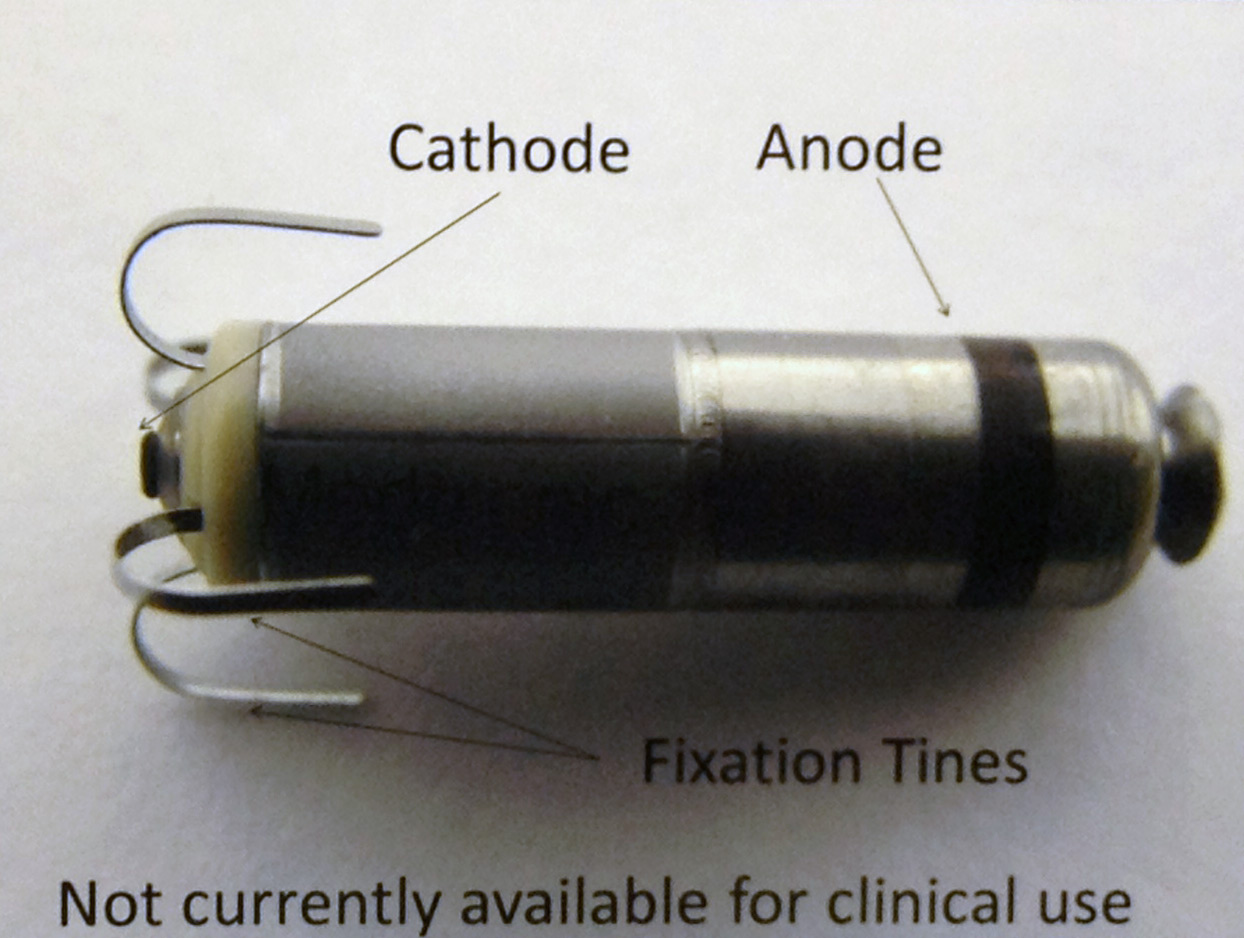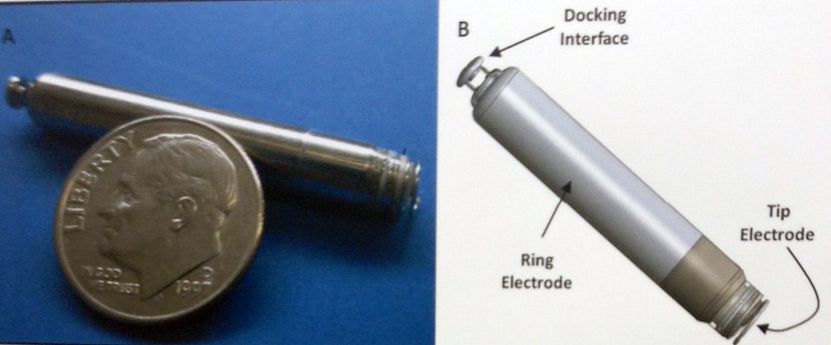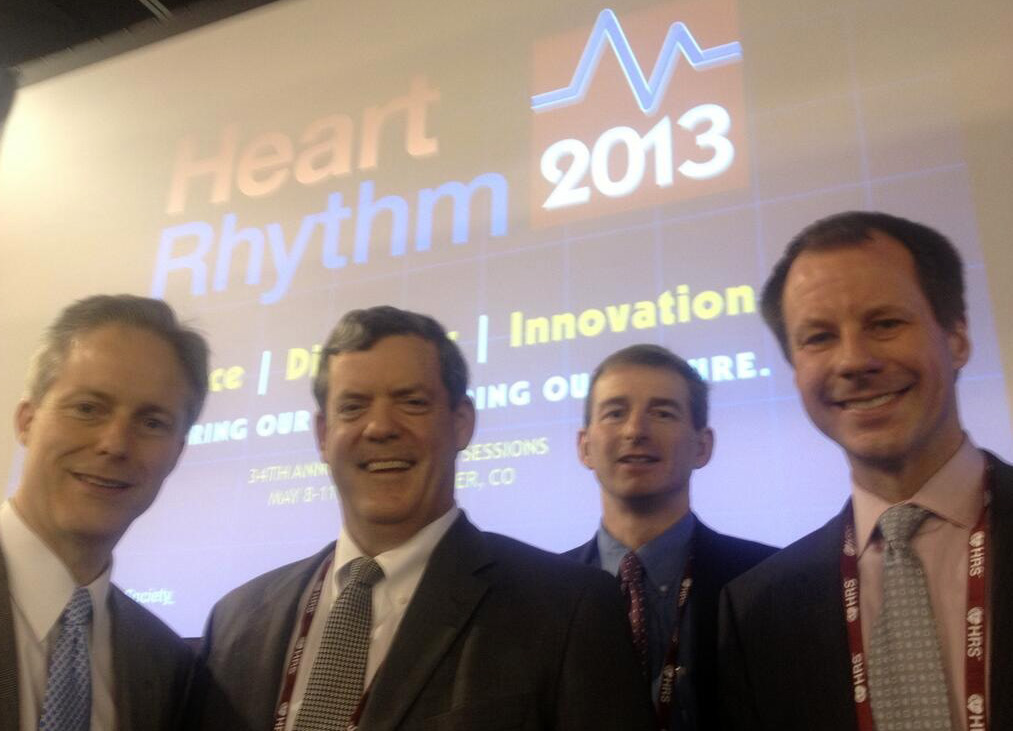 |
| Opening Day HRS2013 |
As the Heart Rhythm Society's 2013 Scientific Sessions are a thing of the past, it is interesting to reflect on what constituted the main thrusts occurring our field. Summarizing thousands of abstracts and hundreds of sessions from scientists (literally) all over the world is impossible, of course. But it did appear a few sea changes in our field are in the works, at least as seen by this humble reporter.
First, we should acknowledge the efforts by the Heart Rhythm Society to limit the bling at the meeting. There were fewer large advertising displays, trucks driving through the streets with ads on top of them, and late-night rendezvous. Heart Rhythm Society handbags were like paper-thin grocery bags or recycled from prior years. Technology was used to a much greater extent, especially for smart phones, with an iPhone app meeting organizer that showed promise, but still needs some fine-tuning, especially in its scheduling functionality. As a result, aside from the
Bill-Fest, the meeting felt more like a scientific session rather than a trade show.
Next we saw the evolution of thinking about the most common arrhythmia that electrophysologists treat: atrial fibrillation. Work on our understanding of atrial fibrosis via MRI assessment as it
might pertain to long-term success of ablation was intriguing. Even more, since the introduction of the mystical focal impulse and rotor modulation (FIRM) mapping several years ago, attention is clearly returning back to understanding of the electrophysiology of atrial fibrillation from one of just approaching the disease anatomically. Many of the abstracts and studies presented revolved round (pun intended) an understanding of rotors or point sources (or both) for the genesis of atrial fibrillation. With this comes an entirely new vocabulary of cardiac electrophysiology with terms like "clockwise or counterclockwise rotor," "phase mapping," "frequency gradients," and "singularities." The black box nature of
Topera Medical's FIRM mapping technique with it's
1960's music box-like maps (video) (that are difficult to interpret) adds to the mysticism of the moment, but it was clear that there was an appreciation that they are on to something.
 |
| Medtronic's version of the leadless pacemaker |
Probably the next cool thing coming down the pike was the "leadless" pacemaker. The pill-like prototypes from Boston Scientific and Medtronic were on display in posters, suggesting that the technology is getting near primetime for humans. Delivered from the groin or neck veins via an 18Fr sheath, these lozenge-like pacemaker capsules lodge in trabeculated right atrium and provide pacing support without the need for leads that extend to a subcutaneous pulse generator.
 |
| Boston Scientific's version of the leadless pacemaker |
Just as an smart phone no longer contains a separate monitor and mouse to control a desktop computer, these little gizmos no longer require wires to connect the pacing pulse generator and battery to the site of pacing - they are housed together. Of course every new technologies has its uncertainties, but I suspect we'll be hearing much more about this technology for patients with chronic atrial fibrillation soon as the first VVIR applications of this technology come of age. Hints that this technology might even be paired with the subcutaneous defibrillator to provide anti-tachycardia pacing some day were everywhere.
 |
"Physician in Social Media" participants (L to R)
Mr. Bob Coffield, yours truly,
John Mandrola, MD, and Edward J. Schloss, MD |
Finally, there seemed to be a growing acceptance of social media at the meeting as more doctors joined ranks there. Even a live Twitter feed was included on the Heart Rhythm Society's iPhone app. Perhaps we'll soon by like the Cairo activists
mention in Mr.
Bob Coffield's talk he gave with me at the sessions: "
We use Facebook to schedule the protests and [we use] Twitter to coordinate, and YouTube to tell the world.” It is clear that social media will continue to play an important role in sharing, reporting, and explaining the science of discovery as well as the coordination of physician voices in our evolving health care world to come.
-Wes




3 comments:
Dr Wes.
There's a better version of their stuff on youtube
http://www.youtube.com/watch?v=MqX17C9Vwj4
Anonymous-
I dunno. I kind of like my unedited, unretouched video version without superimposed circles. I think it makes my point better. But thanks for the link.
hoping that all is well with you and your family.. miss reading your posts
Post a Comment